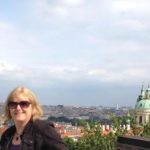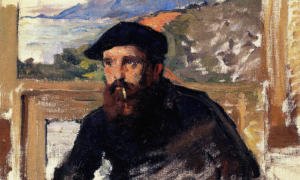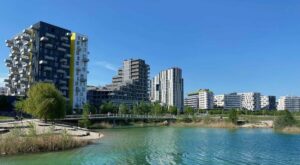(Editor’s note: Mainz is part of our Quick Trip travel series we believe better reflects the expat lifestyle in Europe where we are in and out of cities on business and pleasure trips. Don’t forget to check COVID restrictions in Germany before your visit.)
Mainz, Germany, has a lot to offer with its more than 2,000 years of history going back to Roman times, its cobblestone streets, museums, churches, and many platzes and squares. The best parts of Mainz are in the Altstadt, within its former medieval walls.
Mainz’s large pedestrian zone makes it a relaxing place to walk and sightsee. Whether you spend most of your time enjoying the sights from the outside or popping in here and there, I think you will find many things of interest in this university town, which is the capital of Rheinland- Pfalz (Rhineland-Palatinate), one of the 16 German federal states.

Walking tour
No need for a guided tour. My suggestions below basically take you in a clockwise fashion. As you make your way around the city, you will also see numerous columns, sculptures, and plaques.
• Marktplatz (Market Square) and Dom St. Martin (St. Martin’s Cathedral)
Start your day with breakfast or a coffee in Market Square gazing up at the massive, 1000-year-old St. Martin’s Cathedral and the buildings surrounding the square. St. Martin’s dominates the center of the old town. It is a reddish pink from the outside and gray and gloomy from the inside, but worth a look inside. Once fortified, start your exploration. Continue to the inner courtyard of the cloister or the cathedral treasury and museum.
• Liebfrauenplatz (Square of Our Lady) and the Gutenberg Museum
Next head over to visit the neighboring Liebfrauenplatz and the Gutenberg Museum. Mainz-born Johannes Gutenberg invented the movable-type printing press in 1439, reportedly inspired by the wine- making press. The museum houses two Gutenberg Bibles, the Gutenberg Workshop, as well as exhibits on the international history of books, printing, and script. It is well worth a visit.
• Farmers Market
If you are lucky enough to be in Mainz on one of their market days – Tuesdays, Fridays, and Saturdays, with the biggest one on Saturday – be sure to stop by. Vendors hawk fresh fruit, vegetables, eggs, flowers, fresh pasta, local wine – everything you need for a picnic or a fabulous meal.
The market takes place in three neighboring squares: Marktplatz, Liebfrauenplatz, and Fishtorstrasse, which as the name suggests (Fish Gate Street) is where you can buy fish and accompaniments.
• Wine Fests
A lot of people think of beer when they think of Germany, but Mainz is a wine town, and grapes have been growing here since Roman or pre-Roman times. When I lived in Mainz, I would go to the Saturday Wine Fests from sometime in March to the end of November where locals and expats alike would gather. Every week a different vintner would showcase its wine in Liebfrauenplatz or one of the nearby squares.
People would buy lunch from the food vendors and farmers to make a picnic on the square. When buying a glass of wine, mineral water, juice, etc., at a fest, you’ll pay a Pfand (a deposit), typically two Euros, for the drinking glass or mug, which you will get back when you return the item. If you don’t return it, it’s a cheap and fun souvenir.

• Augustinerstrasse and the Half-Timbered Houses
Next Stop: Augustinerstrasse and the half-timbered houses. From Marktplatz turn left onto Schöfferstraße, walking past bakeries and shops through Leichof to Augustinerstrasse. From there enjoy a stroll down and back in the narrow, cobblestone streets enjoying the enchanting Kirschgarten (“Cherry Orchard”) and the 16th and 17th century houses. Boutiques and galleries line the main thoroughfare as well as in the side streets and alleys.
This is the most charming section of town.
If Rococo style is your thing, note the opulence inside of Augustinerkirche (St. Augustine’s), while you are here. Eat something here or back at the main squares.
• Schillerplatz and Fastnachtbrunnen (Carnival Fountain)
Then head over to Schillerplatz to see the monument honoring the German poet, philosopher, historian, and playwright Friedrich Schiller.
The fabulous Fastnachtbrunnen (Carnival Fountain) pays tribute to the “spirit and myth of carnival in Mainz.”
Schillerplatz is one of the many squares hosting Mainz’s annual Fastnacht (Carnival) festivities. Fastnacht is a multi-day, all-ages affair – toddlers to teenagers, grownups to grandparents – with Mainz holding one of the largest in Germany. Fastnacht occurs sometime between early February and early March. But beware, Mainz’s partying ends on Monday (Rosenmontag), one day before Fat Tuesday.
• Stephanskirche (St. Stephen’s Church) and the Chagall Windows
From Schillerplatz, you can get to St. Stephen’s Church (Stephanskirche) by heading up Gaustrasse and turning left at Breitenbacherstrasse. It will be up on your left. It is well-worth a short hike up to the Gothic-style church to view both the inside and the nine blue, stained-glass windows created by Marc Chagall.
Roman relics and ruins
More than 2000 years ago, Mainz was an outpost for the Roman military, and fortunately for us a few Roman ruins and relics remain scattered about the town.
Here are a few highlights:
• In the hills above St. Stephen’s Church, there is a Roman City Gate (Römisches Stadttor) and a Roman Stone Aqueduct (Römersteine). To view The Temple of Isis and the Mater Magna, head back down the hill to the
Römerpassage (Roman Passage) Shopping Mall.
• Nearby, at Taberna Archaeologica Römerpassage 1, you can view the foundations of the Roman temple, which were discovered while excavating for the actual mall. Römisches Theater (Roman Theater Station), one of the city‘s two train stations, is surrounded by a Roman amphitheater.
It is not worth a special trip here because you cannot walk around, but if you are taking the train, be sure to look out your window as you pass by.
• Christophskirke (St. Christoph) – World War II Memorial.
St. Christoph’s Church is an outside exhibit. The church was heavily bombed during World War II, and the skeletal remains and open-air display are a poignant memorial to the dead of World War II. If you have the time, I recommend it. It may make you think of the Gedächtniskirche (Kaiser Wilhelm Memorial Church) in Berlin, an anti-war memorial to peace and reconciliation.
Where to Eat and Drink
The above-mentioned squares (Marktplatz, Liebfrauenplatz, Fischtorstrasse) as well as Gutenbergplatz and the area surrounding and encompassing Augustinerstrasse all have excellent places to eat and drink while people watching (one of my favorite things to do)! (It is always best to eat a couple or few blocks away from the train stations where the food is typically a lot better.)
Mainz has a wide range of places to eat and drink from traditional German fare to inexpensive Turkish food, to international cuisine, including pizza and pasta, wine bars, and Irish pubs.
Weinhaus zum Spiegel was one of our favorites wine houses on Augustinerstrasse.
While you are in town, sample some Lebkuchen (Gingerbread), one of their winter specialties, not to be confused with Leberkäse (Liverloaf), something completely different.
Prost und zum wohl! (Cheers and good luck!)
Getting there
Mainz is a quick trip from Frankfurt:
• If you are coming by train, you can get off at one of two train stations, Mainz Hauptbahnhof (Main Train Station) or Mainz Römisches Theater (Roman Theater Station). If you don’t mind walking across the river, a third option is the Mainz-Kastel
Station.
• By car, take A60 east and west, A63 south, and A643 north. You can park near or under the Rathaus (Town Hall) or Rheingoldhalle (Convention Center).
Timeframe
To truly explore all that Mainz offers, you’ll need a couple of days. If you only have one, focus on some of its treasures in the Altstadt. You’ll want to return at different times of the year for the various festivals.
Since it is quick trip from Frankfurt, I think Mainz will become one of your favorite quick trips just like it is mine! (Gute Reise!)

About the author:
Mary Porcella is a Europhile who has lived in Germany, Norway, Italy, and the U.S. She is a writer, editor, and photographer.
She loves seeing new places, returning to old haunts, and meeting up with family and friends. As of today, her travels have taken her to 20 European countries, and she hopes to visit the rest.
See our Germany archives here.
Mary Porcella is a Europhile who has lived in Germany, Norway, Italy, and the U.S. She is a writer, editor, and photographer. She loves seeing new places, returning to old haunts, and meeting up with family and friends. As of today, her travels have taken her to 20 European countries, and she hopes to visit the rest.















